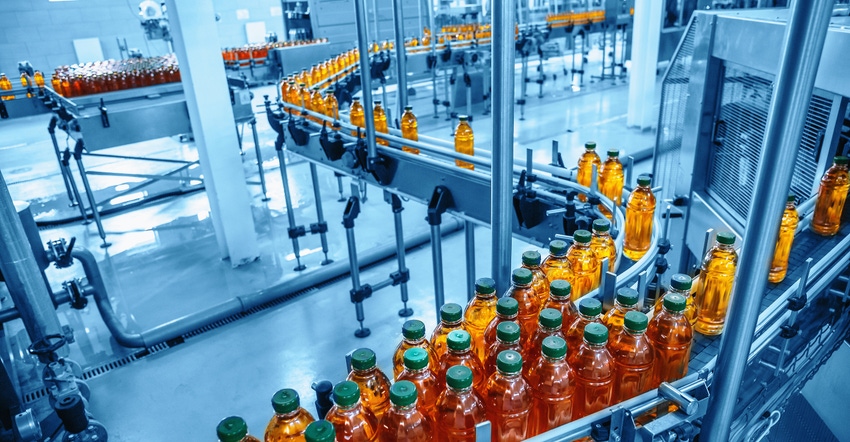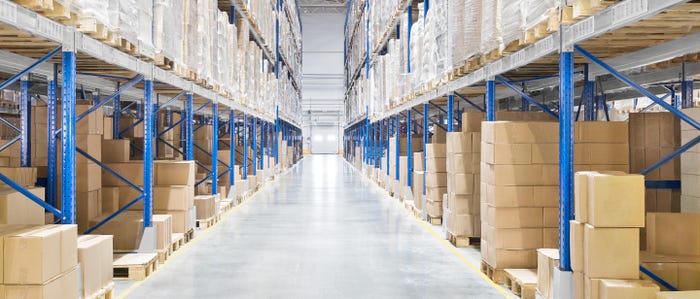You can ensure a smooth installation by understanding where to start and by following these tips at each stage of the process.

Installing new packaging machinery provides a variety of advantages and opportunities to brand owners, but it also comes with an equally variety of challenges. Purchasing, installing, and implementing new packaging equipment involves a number of outside vendors and impacts a range of departments within an organization, all of whom need to align to complete the process successfully.
A 2020 report by industrial sourcing firm Thomas showed an 84% year-over-year increase in packaging machinery supplier evaluations and a 250% increase in overall activity related to packaging machinery on its platform. Much of these increases can likely be explained by overall trends in reshoring some production processes, amplified by supply chain issues many brands experienced during the early stages of the COVID-19 pandemic.
Regardless of the drivers behind this interest, brands looking to bring their packaging operations in-house or expand existing packaging capabilities may not have the experience needed to complete the process smoothly and successfully. Here are a variety of topics to help brands understand where to start and to provide tips for each stage of the process.
Why brands buy their own packaging machinery.
For brands that frequently launch new products or change their packaging, outsourcing packaging operations has always been the best choice because it provides flexibility and allows them to bring those products to market quickly.
For brands whose business centers on established products with consistent packaging formats and materials, however, bringing packaging operations in-house provides long-term benefits, including cost savings and protection from some supply chain interruptions. This new equipment brings with it more control over the brand’s packaging operations and better visibility into the process, which can make it easier to identify opportunities to improve efficiency and reduce costs.
Challenges for first-time buyers.
Major brands often have established relationships with partners who manufacture and install machinery, making the process seamless. For brands looking to purchase packaging equipment for the first time or for the first time in many years, it can be a daunting process. Without established, regular purchasing relationships with vendors, these companies may be a lower priority for machinery vendors and face long wait times. Even beyond timeline concerns, brands not experienced in the process are likely to face a variety of challenges.
Companies that haven’t purchased packaging equipment before may face a knowledge deficit when it comes to installing the machinery and incorporating it into their existing manufacturing setup. While the default specs a vendor provides may sound like a perfect match for the brand’s needs, it’s rare that the machinery will integrate seamlessly into an existing facility without the need for customization.
In-house teams have their own responsibilities. Adding installation of unfamiliar equipment to that list will likely be met with resistance, or at minimum will require employees to overcome a learning curve that has many complex and moving parts. Having inexperienced technicians handle the installation process may also lead to costly mistakes.
Even if installation is successful, an inexperienced team is unlikely to know how to properly conduct a qualification to ensure the equipment is functioning to its potential and producing an optimized return on the brand’s investment.
For companies that are adding one new piece of equipment to an existing packaging line, the installation of this one piece will impact others and, if not done correctly, could reduce the overall equipment effectiveness of the whole line.
We begin with step one ...
1. Getting started.
There are a variety of considerations that must be taken into account when making this type of purchase for the first time. It’s rare to get everything the brand needs from one vendor, as most packaging lines are a patchwork of machines and connectors. To design an effective packaging process, a brand needs a team of people who can develop detailed technical specifications, manage a variety of vendors, integrate multiple machines, and perform effective project management and line optimization.
When using an external vendor to manage the process, it is important that personnel who will use the equipment and manage the packaging line be involved in the process from the early stages. While engineering and purchasing teams may seem to know everything about an installation project, production personnel are the ones who will need to work with this equipment daily. Involving production managers, line operators, and maintenance staff in the early stages of the process will provide valuable input and allow them to get familiar with the machinery before it arrives, which contributes to a smooth installation and integration.
It is also important not to overlook potential regulations, industry standards, labor agreements, and rules for business processes when preparing for new machinery. Involve personnel with knowledge about local zoning ordinances, facility safety rules, capabilities of IT infrastructure, and other factors that may impact the installation process. Be upfront with your machinery vendors about any labor agreements (such as with a union shop) that may impact who can perform certain tasks during installation.
If the brand is transitioning from outsourced to in-house packaging for the first time, they may need to build this team before the process begins. Every mistake and oversight committed during the early stages will be compounded as the purchase and installation process proceeds, turning small errors into major problems.
2. Planning for installation.
With its internal team and, ideally, an experienced third-party partner in place, the company can lay out plans for the installation. This starts with a thorough User Requirements Specification (URS) that details the requirements for every department and process involved in the installation and operation of the machinery.
It’s important to be thorough with the creation of this document, as any error or omission can be costly both in terms of money and of lost time. The vendor may provide a description of the machinery and its measurements in their proposal, but it’s important that all parties agree to the brand’s URS to ensure the equipment meets its needs.
Internal groups that need to provide input for the URS include:
• Location / Environment / Facility Management
• Mechanical
• Electrical
• Automation
• IT
• QA / QC
• Compliance (Rules / Regulations / Industry Standards)
• Safety
• Operations
• Logistics
• Training
• Maintenance
• HR
• Finance
• Partners
The old adage “measure twice, cut once” is important to keep in mind during the planning phase. When making a large purchase like new machinery, the margin for error is slim. Even the smallest vendor “upgrades” that were not communicated can have a huge impact on installation. Accurately measuring the amount of available space and communicating those measurements clearly to each equipment vendor is the best way to avoid a costly mistake.
3. Project management.
A successful installation starts with communication. Well before the delivery truck and the technician arrive, ensure all personnel are aware of what needs to be installed and when installation must happen. All individuals involved in the process should be aware of the installation time in advance to allow concerns to be raised and addressed. A project manager should verify the time frame for delivery and installation with the vendor, communicate it internally, and set a deadline the vendor must meet. It’s also important to have a back-up plan, as delays will almost always play a factor.
Knowing that delays are always to be expected, the project manager must have contingency plans in place, though it is not always a good idea to inform the vendor about those contingency plans.
4. On-site training for external resources.
With the variety of components and outside vendors who will be involved installation, it’s important to make sure everyone is trained on the safety procedures for the facility. This training must be communicated in advance and completed prior to the start of any on-site work. In many instances, this will require outside personnel to come in for training in the days and weeks before installation begins to avoid any false starts or delays at the beginning of the project.
5. Prepare for downtime.
Plan for the time other equipment in the facility will need to shut down during installation. This requires effective communication with any departments the installation will impact so that the entire facility is prepared and can compensate for potential lost production time.
For brands installing machinery to switch from outsourced packaging to in-house packaging, it is also important to plan ahead for extra production to keep ample product in warehouses and in the marketplace to compensate for this downtime.

6. Clear the way for delivery.
Ensure in advance of delivery that transport vehicles (such as cranes and forklifts) are able to handle the weight and size of the machine, and that a qualified operator is available to operate the transport vehicle. Examine the entire path the machinery will need to travel from the unloading dock to its installation location to confirm the path is clear and wide enough for the machine to pass through.
7. Evaluate utilities.
Evaluate all supply lines, hook-ups, and building connections to ensure they are available at the right places for the new machines. Confirm all electrical, hydraulic, compressed air, and other utilities needed for the new machinery and confirm with your facilities team that those utilities are available ahead of installation. The brand cannot depend on the vendor to do this work, so if the facilities team is not able to handle it, bring in a qualified tradesperson to complete it well ahead of the equipment installation date.
8. Prepare the installation area.
To ensure a smooth installation, ensure the vendor’s technicians have access to the machines and the installation area. If the new machine will be integrated into an existing packaging line, prepare for the line to shut down during installation. If an existing machine needs to be removed as part of the installation, ensure it is shut down and all utilities are disconnected. Any time the vendor technician spends waiting for access or facility preparation leads to wasted time and wasted money.
9. Prepare for integration.
Once the equipment is installed and operational, all upstream and downstream equipment should be ready to run. Ancillary equipment such as scales, printers, and labelers should also be ready to run so that personnel can test all equipment to ensure the new line runs properly. The vendor’s technicians are unlikely to complete mechanical and electrical connections between new and existing equipment, so the in-house team should be prepared to complete those tasks.
10. Test product and consumables.
Once the equipment is installed and running, a sufficient amount of product needs to be available to run tests and confirm the equipment is running properly and performing up to its potential. In addition to product, ensure that ample amounts of all packaging materials — such as shrink film, corrugate trays, glues, and other adhesives — are available to complete a thorough testing process.
Purchasing and installing new packaging machinery is a highly involved process with many moving pieces. This guide can serve as an excellent jumping off point for looking into packaging equipment for the first time or as a great refresher for brands with more experience.
Regardless of which of these categories your brand falls into, one tried-and-true approach is to work with an experienced third-party partner who can advise and provide direction on the entire process, from planning through implementation.
About the Author(s)
You May Also Like




